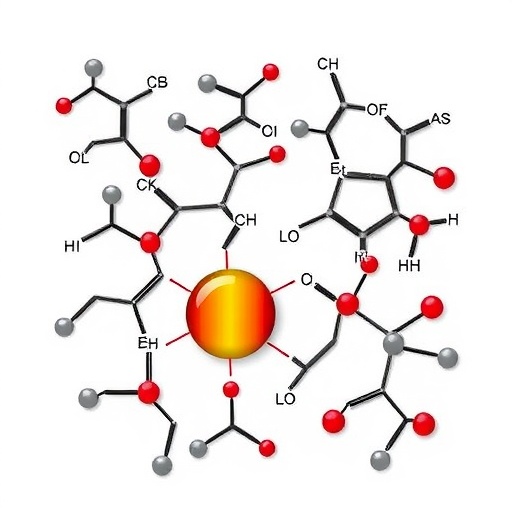In the relentless pursuit of novel therapeutic agents and agrochemicals, the construction of densely substituted aromatic rings remains a cornerstone of modern synthetic chemistry. These structural motifs underpin a wide array of drugs and crop protection agents, contributing to their efficacy and specificity. Despite the centrality of aromatic scaffolds in medicinal and agricultural chemistry, the synthetic routes to access highly functionalized aromatic compounds often encounter significant challenges. Traditional cross-coupling methods and electrophilic aromatic substitutions, while powerful, can be limited in scope and versatility especially when it comes to densely substituted, complex architectures.
Aryne intermediates have long been recognized as powerful synthetic tools capable of transforming aromatic chemistry. Characterized by their highly reactive and strained triple-bonded species formed temporarily within aromatic rings, arynes unlock pathways to molecular complexity that rival those offered by classic functional groups. Their utilization extends across numerous reaction paradigms, including nucleophilic additions, pericyclic rearrangements, and even the activation of otherwise inert σ-bonds. Despite this impressive synthetic potential, the broader application of arynes has remained largely confined to a niche community. The principal obstacle to mainstream adoption lies in the harsh or inconvenient conditions historically required to generate these fleeting species, which has limited their practical use in complex molecule synthesis.
In a groundbreaking advance, Seong, Kargbo, Yu, and colleagues report a transformative approach that promises to overturn these long-standing barriers to aryne chemistry. Their team has devised an innovative aryne precursor derived straightforwardly from readily available carboxylic acids. This precursor can be synthesized in a single reaction step, representing a remarkably streamlined entryway to aryne generation. Even more compelling is the activation protocol: utilizing either blue light irradiation or thermal energy to induce aryne formation under mild conditions. This methodology circumvents the harsh reagents and extreme conditions previously synonymous with aryne chemistry, making it accessible to a much broader spectrum of researchers and applications.
The introduction of this new precursor platform enables the generation of dozens of previously uncharted aminated aryne species, including the notoriously elusive pyridynes. Pyridynes, which are nitrogen-containing analogs of benzyne, have remained largely synthetic enigmas due to their challenging and unstable nature. By providing a general and practical method for their formation, this work heralds a new era in the synthetic utility of heteroarynes, vastly expanding the medicinal chemist’s toolbox for the design of nitrogen-rich heteroaromatic frameworks. These frameworks feature prominently in pharmaceutical agents due to their tunable electronic and biological properties.
The implications of this advance resonate far beyond mere synthetic efficiency. The ability to access diverse and highly substituted aryne intermediates opens deep avenues into drug discovery and development. Arynes incorporate a unique reactivity profile, facilitating the rapid assembly of complex molecular architectures that are otherwise arduous to construct. By expanding the range of accessible aryne derivatives, chemists will be empowered to explore uncharted chemical space with increased precision, aiding the design of molecules with novel biological activities or enhanced target-specific interactions.
From a mechanistic standpoint, the success of this new aryne precursor and activation strategy is rooted in clever molecular design. By tethering the aryne-generating functionality to a carboxylic acid scaffold, the team harnessed the inherent stability and abundance of these acids as starting materials. The photo- and heat-induced activation pathways presumably proceed via decarboxylation or fragmentation events that liberate strained triple bonds within the aromatic ring, thus generating the reactive aryne intermediates in situ. This approach elegantly avoids intermediates requiring strongly electrophilic or nucleophilic conditions, making the procedure more compatible with sensitive functional groups common in late-stage synthetic intermediates.
A key highlight of this work is the compatibility of the aryne formation with blue light activation. Photochemical methods have surged in synthetic organic chemistry, offering mild, energy-efficient, and selective means to trigger difficult transformations. The use of visible-light photochemistry integrates seamlessly into the scheme for generating arynes, circumventing the need for ultraviolet light sources which can provoke unwanted side reactions or degrade sensitive substrates. The option to alternatively employ thermal activation enhances the versatility of the method across diverse laboratory settings, further lowering the barrier for adoption.
The research team demonstrated the broad substrate scope and functional group tolerance of their aryne precursor system, successfully accessing an array of aminated aryne species. The generation of these novel arynes showcases the platform’s robustness, adaptability, and potential to rapidly diversify molecular frameworks. The work hints at future expansions where different substituents or heteroatoms could be incorporated, further multiplying the accessible chemical entities. Their approach is poised to be a stepping stone toward the synthesis of even more structurally complex and functionally diverse arynes.
Beyond synthetic methodology, this discovery may impart far-reaching impacts across pharmaceutical sciences. The intricate structures enabled through aryne chemistry can facilitate chemical biology studies, target validation, and the rational design of mechanism-based inhibitors. Unique chemical functionalities accessed via aryne intermediates could prove invaluable in probing protein-ligand interactions or modulating enzyme functions with unprecedented specificity. This paradigm shift could accelerate the discovery pipelines for next-generation drugs.
From a broader perspective, the introduction of this general aryne precursor aligns synergistically with current trends in sustainable and green chemistry. By leveraging simple feedstock chemicals such as carboxylic acids and employing mild activation conditions, the process minimizes hazardous waste and excessive reagent usage. This eco-friendly aspect will appeal not only to academic laboratories but also industrial practitioners seeking to implement greener synthetic processes without sacrificing efficiency or molecular complexity.
This report lays the foundation for what is likely to be an explosive expansion of aryne chemistry into fields where stringent conditions once prohibited its practical use. As researchers adopt and refine this new precursor platform, it is foreseeable that the chemistry of arynes will become mainstream, infiltrating routine synthetic strategy akin to traditional cross-coupling or C-H activation methods. The door is now open to uncover an expansive array of aromatic and heteroaromatic compounds previously deemed elusive.
In conclusion, the seminal work by Seong, Kargbo, Yu, and colleagues marks a paradigm shift for synthetic aromatic chemistry. Their innovative design and facile activation of a carboxylic acid-derived aryne precursor will undoubtedly ignite renewed enthusiasm to harness the full power of aryne intermediates. The synthesis of myriad novel aminated arynes, including challenging pyridynes, fundamentally broadens the scope of chemical architectures accessible from readily available starting materials. The implications for pharmaceutical innovation, sustainable synthesis, and fundamental chemical science are profound, promising a flourishing era of aryne-enabled discoveries that may redefine the frontiers of organic synthesis.
Subject of Research:
Synthesis and activation of a carboxylic acid-derived aryne precursor enabling access to diverse aryne intermediates, including aminated arynes and pyridynes, for applications in drug discovery and complex aromatic synthesis.
Article Title:
Myriad Aryne Derivatives from Carboxylic Acids
Article References:
Seong, C.M., Kargbo, S.S., Yu, C.L., et al. Myriad Aryne Derivatives from Carboxylic Acids. Nature (2025). https://doi.org/10.1038/s41586-025-09830-1
Image Credits:
AI Generated
Tags: activation of σ-bondsagrochemicals and aromatic chemistrychallenges in synthetic routescross-coupling methods in chemistrydiverse aryne derivativeselectrophilic aromatic substitutionshighly functionalized aromatic ringsnucleophilic additions in arynespericyclic rearrangements in synthesispractical applications of arynessynthesis of aromatic compoundstherapeutic agents from arynes





